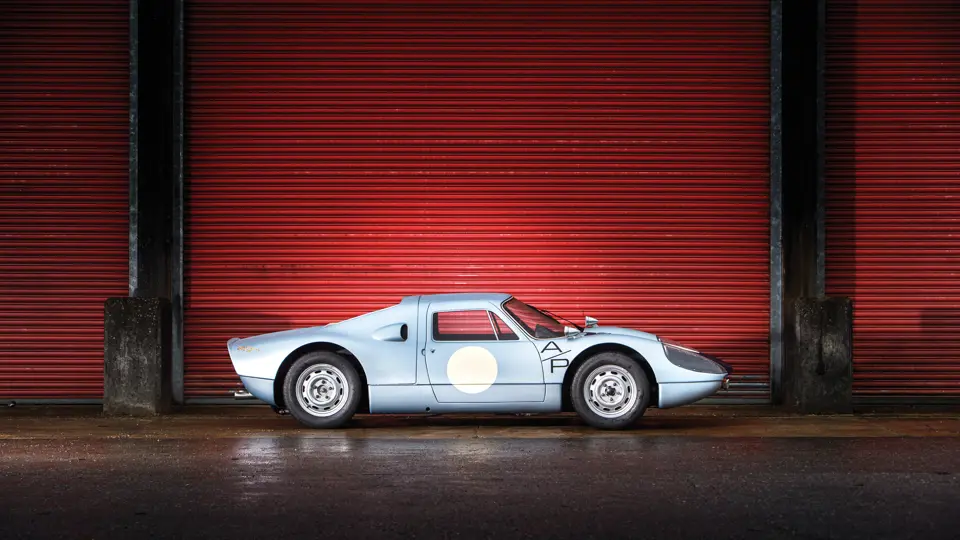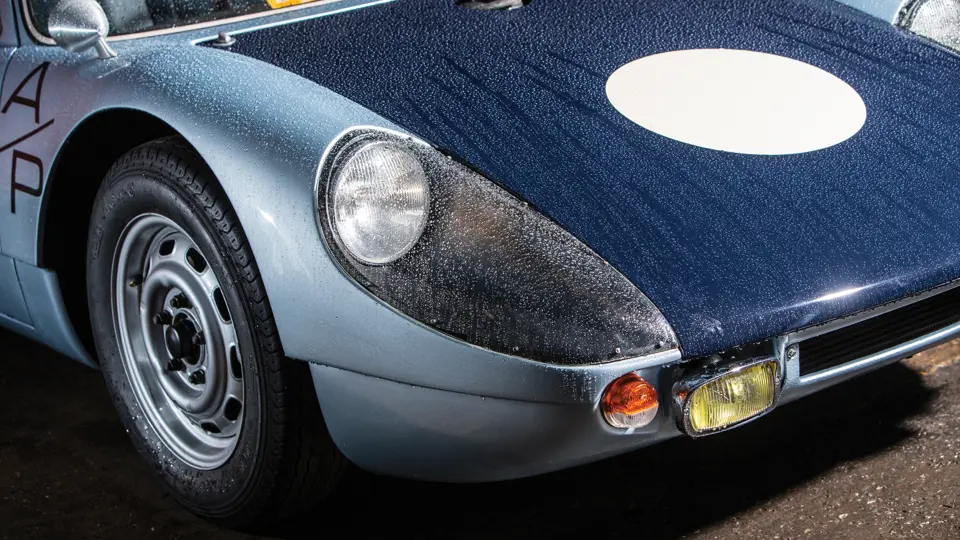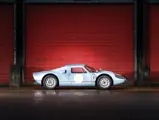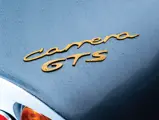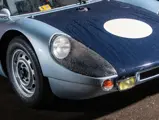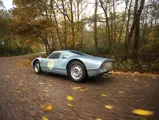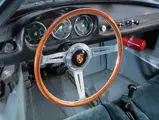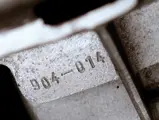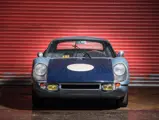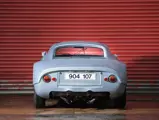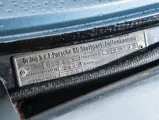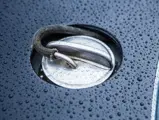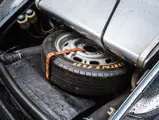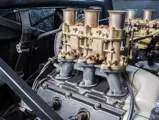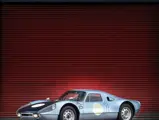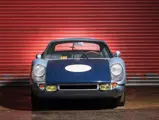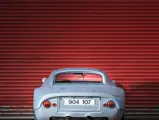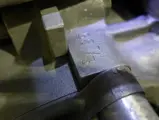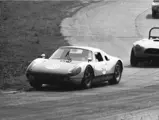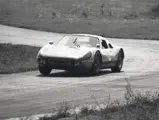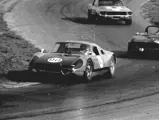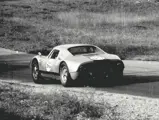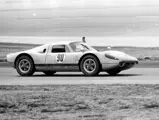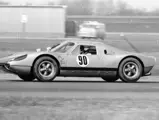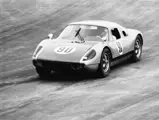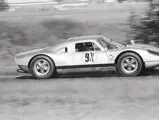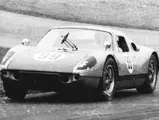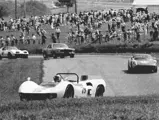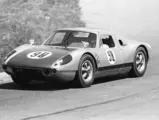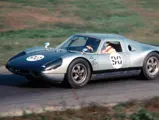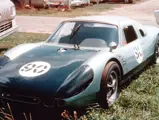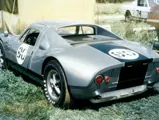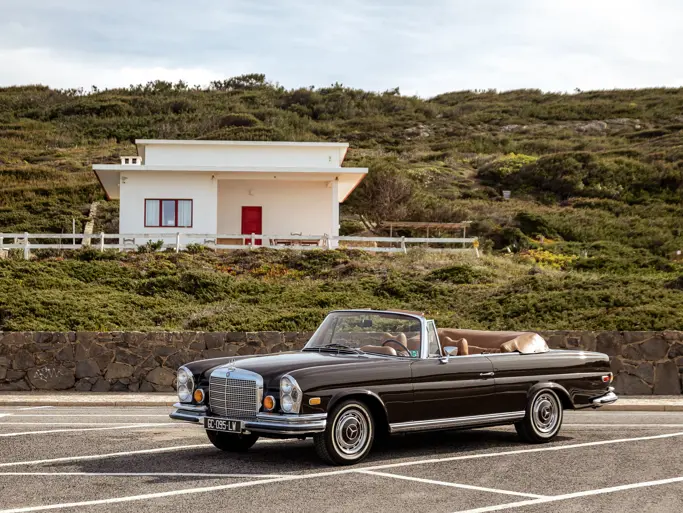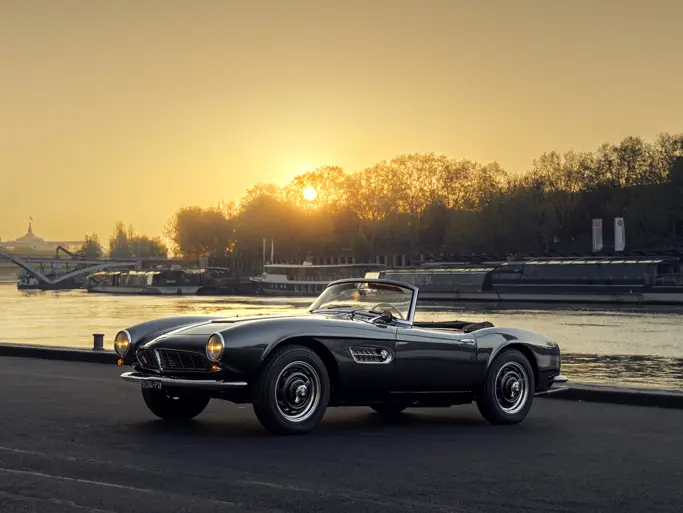
1965 Porsche 904 Carrera GTS
{{lr.item.text}}
$1,650,000 USD | Sold
{{bidding.lot.reserveStatusFormatted}}
- The second from last 904 Carrera GTS built
- Documented ownership and extensive competition history
- Offered with a period-correct four-cam Carrera engine
- Arguably the most beautiful Porsche ever
- One of just four 904 Carrera GTSes built in "Series 2" specification from new
1,991 cc air-cooled horizontally opposed six-cylinder engine with two Weber 40IDA triple-choke downdraft carburetors, five-speed manual transmission, independent front and rear suspension, and front and rear disc brakes. Wheelbase: 90.5 in.
The Type 904, born from Porsche’s disappointing foray into Formula One in the early 1960s, was created to bring the company back to its racing sports car roots. In 1962, the immensely talented Ferdinand A. “Butzi” Porsche, the grandson of the company’s founder, was tasked with designing a new two-seat competition coupe that could also be driven on the street; this car was to utilize the mid-engine chassis configuration that had proven so successful with the racing department’s lightweight spyders. A run of 100 cars was approved to homologate the design for the FIA’s Group 3 GT category. In short order, Butzi had laid out a boxed steel ladder tubing frame on a 90.5-inch wheelbase, which would be clothed in a sleek and very light body shell of fiberglass. This design is still widely considered one of the company’s most beautiful designs.
The body material was Porsche’s first venture into plastic composites. The panels, produced by Heinkel, were glued and bonded to the steel frame, creating a semi-monocoque structure. The seats were solidly mounted, but the car offered an adjustable steering column and pedals. Porsche had hoped to have its new six-cylinder Type 901 engine ready for the new mid-engined coupe to run at Le Mans, but it was not convinced that the new engine could go the distance. Thus, most 904s were fitted with the Type 547 (1.6 liter) and the Type 587/3 (2.0 liter) DOHC Carrera four-cylinder motors, and it was only towards the end of production that the 2.0-liter 901 flat six was used. The beautifully balanced 904 GTS, which was introduced in early 1964, would enjoy a brilliant inaugural season, scoring victories at Sebring, the Targa Florio, Spa, the Nürburgring 1000 KM, the 24 Hours of Le Mans (a 1-4 class sweep), the 12 Hours of Reims, the Coppa Inter-Europa, the Tour de France, the Bridgehampton 500 KM, and the 1000 KM of Paris. In U.S. amateur racing, the 904 was considered potent enough to be classed with the much more powerful big block Corvettes and Cobras, and it still acquitted itself admirably. Over a two-year period, Porsche would produce just over 100 of these exquisite little coupes, but time and technology would not wait, and Porsche’s new space-framed 906 was deemed a superior vehicle. GTS production ended before a second 100-car run could commence.
This fine example’s history is well-documented. It was built in 1965 and is the next-to-last of the four-cylinder series. It was fitted with road equipment and originally shipped to Volkswagen Islandi, a dealership in Hekla, Iceland, perhaps for promotional use. Research by factory expert Jürgen Barth and Jerry Pantis, author of The Porsche 904, 906 & 910 in the Americas, indicates that 904-107 was among just four “second-series” cars fitted with a reinforced chassis, center-filling gas tank, short doors with pull-up plastic side windows, upgraded brakes, and a reshaped tail section with a slight “Kamm” ducktail. Because these cars were built near the end of the series, more time was lavished upon them to ensure that every detail was correct.
The Icelandic dealership sold this car in 1967 to Autohaus Walter von Hoff, a Volkswagen dealer in Bad Kreuznach, West Germany. In late 1967, the 904 was sold to an American amateur racing driver, Dr. Carl Armstrong of Toledo, Ohio, for about $6,000.
Dr. Armstrong picked up his new car at the Port of New York City and drove it home. Available data shows that the car was fitted at that time with four-cam engine number 99 088. Dr. Armstrong did most of his own race preparation and painted chassis number 904-107 a light metallic blue. According to Pantis, who researched the car’s racing results with the help of noted Porsche historian Jim Perrin, Dr. Armstrong extensively raced the car, usually carrying #90, in SCCA Central Division contests in 1968 and 1969.
On August 24, 1968, Dr. Armstrong won the A Production race at Waterford Hills, Michigan; came 2nd in class at Waterford Hills on September 14; won 1st again at Waterford on September 28 and again on October 6 at Steel Cities; and came in 4th at Mid-Ohio October 13. It appears that during Dr. Armstrong’s ownership, the car sustained some light damage to the driver’s side front fender. The transaxle case also suffered some damage, so the unit was replaced with one from a 911. It is recorded that the car’s Type 587/3 four-cam engine had a propensity for head gasket failure, so the owner had his brother fabricate a new set to resolve the problem. Pantis records that the flywheel came adrift at one race at Waterford, so Dr. Armstrong towed the car home, made an overnight repair, and returned to the track the next morning.
In 1969, Dr. Armstrong raced his little coupe a few more times, but after acquiring a 906, he sold the 904 to Robert Fergus, the owner of Midwest Volkswagen (MidVo) in Dublin, Ohio. Fergus prepared the GTS for road use by repainting it white with yellow trim and installing carpeting and more comfortable seats. However, he only had the car for a short period of time, as he sold it to well-known Alabama Porsche enthusiast and collector George “Jerry” Reilly. A correct 904 transmission and a 911 S competition engine were installed, and Reilly repainted the car in its original silver. Soon after, Reilly moved to Massachusetts, and over the next 30 years, he enjoyed the car. While it wasn’t raced, Reilly says he did enter the GTS in several track events at Lime Rock Park.
In 2001, Reilly reinstalled the original four-cam 904 engine (99 088) that was in the car when it was sold to Dr. Armstrong, and he offered the car for sale through Paul Russell and Company. By that point, the car had been driven less than 20,000 kilometers from new, and it appeared quite original in most aspects. The new owner, Mr. Cal Turner, took the car racing again, but unfortunately, the four-cam engine seized during a race at Summit Point, in West Virginia. Again, a 911 engine was plugged in, and the damaged four-cam was sold to Lothar Hoess, the owner of chassis number 904-100, the car in which that engine was originally installed. In 2005, the car was acquired from a private owner in Europe by DK Engineering in England, which performed what it described as a “thorough but very sympathetic” restoration that retained as much of the car’s original components as possible. Since then, the car has joined a significant Porsche and VW collection and has been used sparingly.
Chassis number 904-107 is offered here in roadworthy condition, being fitted with a 1,991-cubic centimeter, magnesium-cased, single-plug 911 engine of approximate 1966–1967 vintage with two triple-throat downdraft Weber 40IDA carburetors. Quite surprisingly, it is still fitted with its original Nadella axle shafts, Eberspacher gasoline heater, fuel surge tank in the nose compartment, the coconut-fiber matting beneath the front-mounted gas tank, and a set of 1964-dated steel and alloy 5.5-inch wide competition wheels, which may be original to this car. The interior features a period-correct Les Leston wood-rimmed steering wheel. At some point in its racing career, the car’s chassis was reinforced with additional steel tubing around the rear suspension. With the exception of the chassis reinforcement, all the preceding suggests that this is a largely unmolested late 904. A recent and thorough inspection was carried out by a leading Porsche expert, and documentation from this inspection is on file and available to review.
Included in the sale of this car is a correct 1964 Type 587/3 904 engine (number 99 111) of 1,966-cubic centimeter displacement, which has been mounted on a stand. It is understood that this motor is listed by Porsche as having been a spare. The engine was comprehensively inspected and tested to confirm that it is indeed in good health. It has since been removed, but it is ready to be fitted to the car once again.
The 904 Carrera GTS is today considered one of Porsche’s most desirable and collectible models, and here is a fine example that would be the crown jewel in any collection of 1960s racing Porsches.




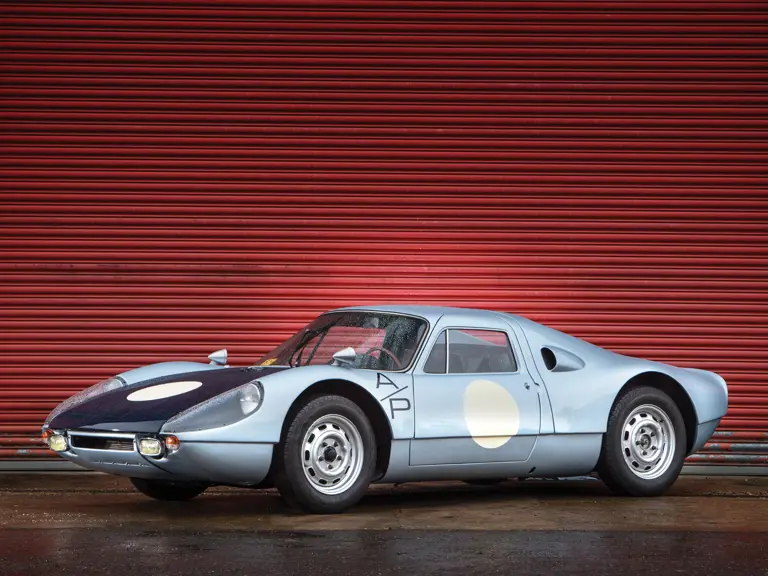
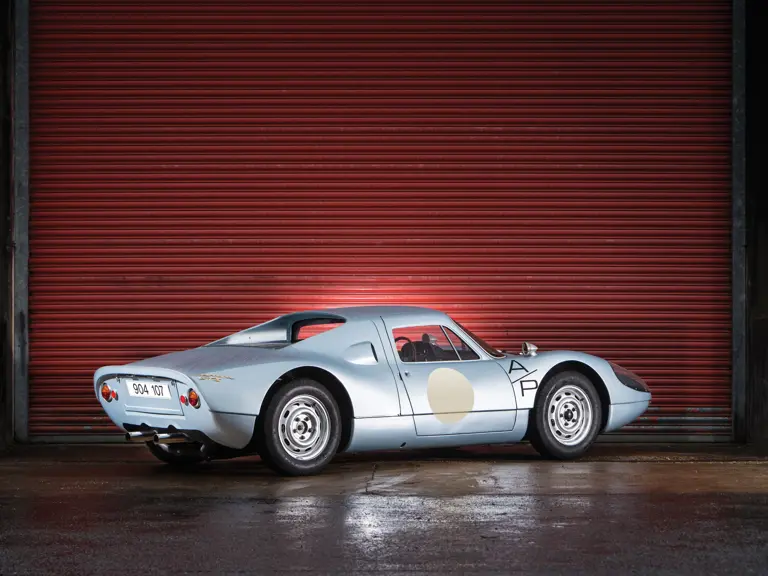



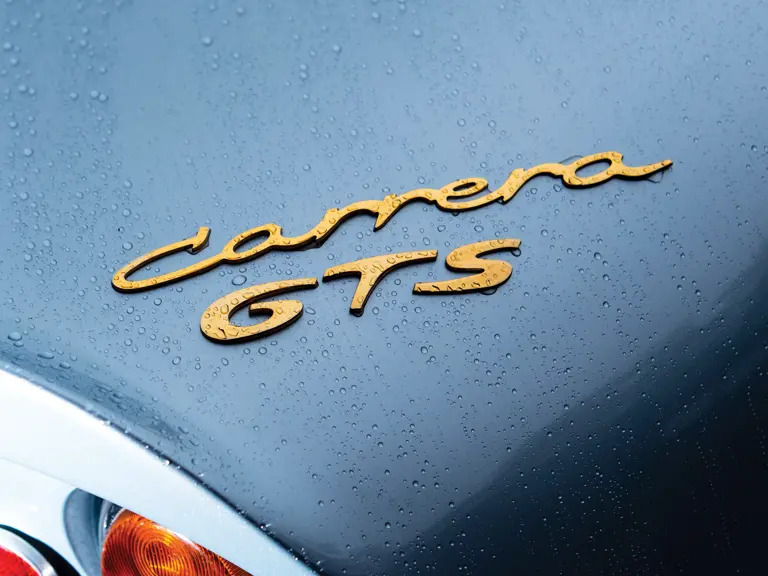
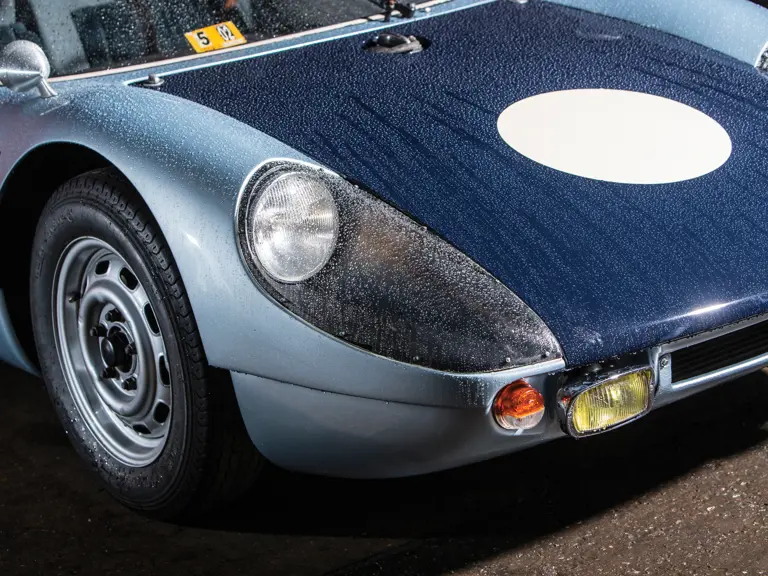

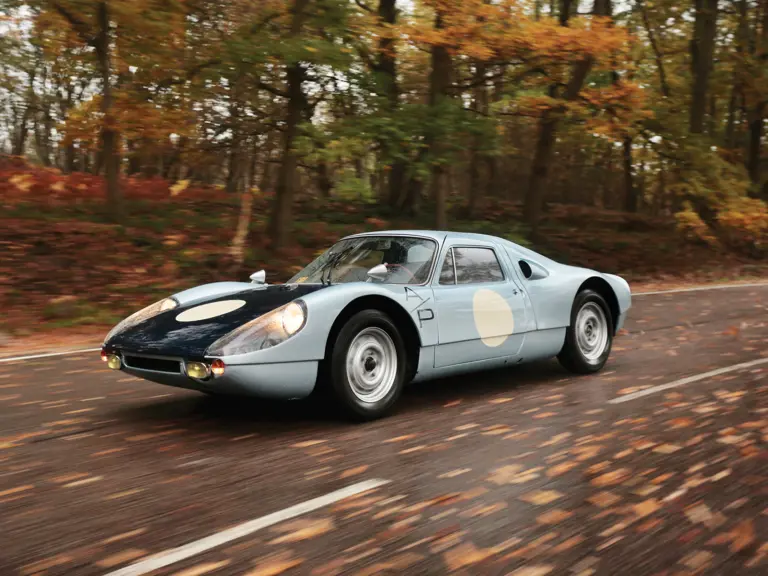
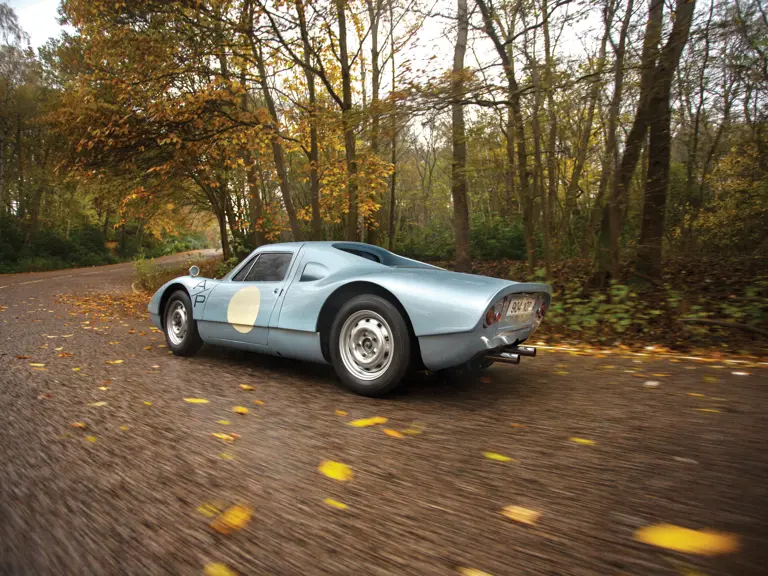
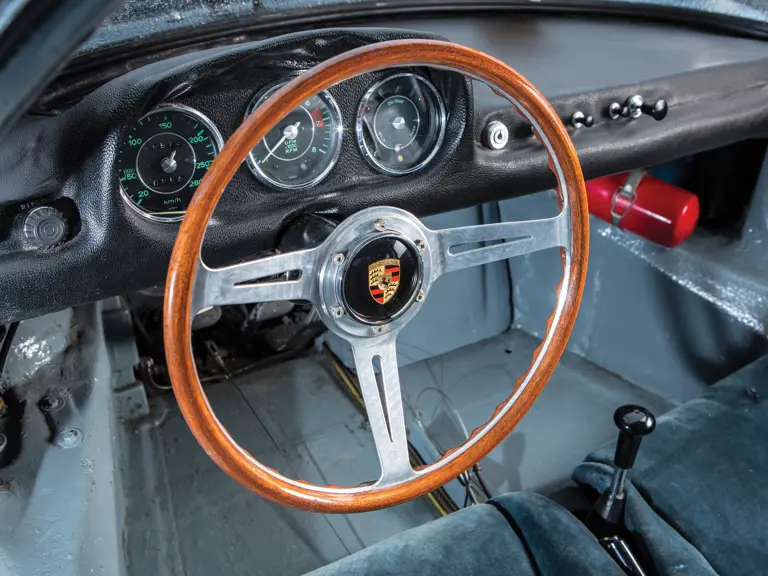
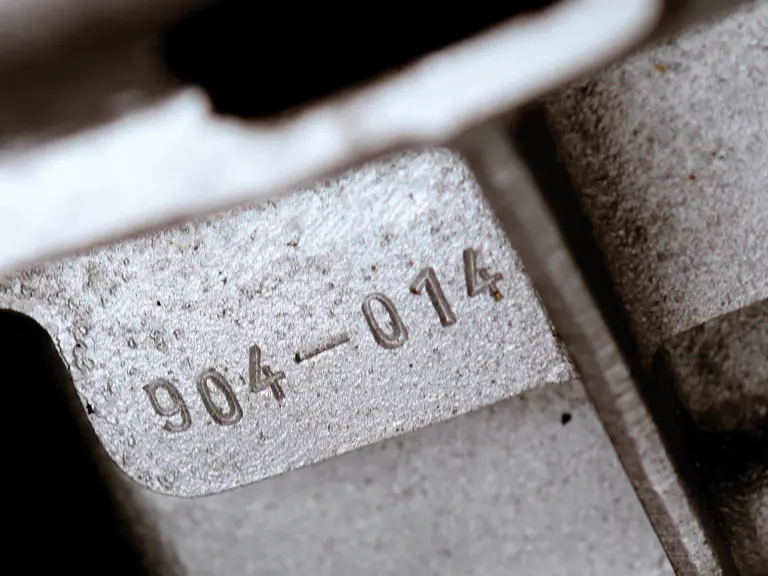
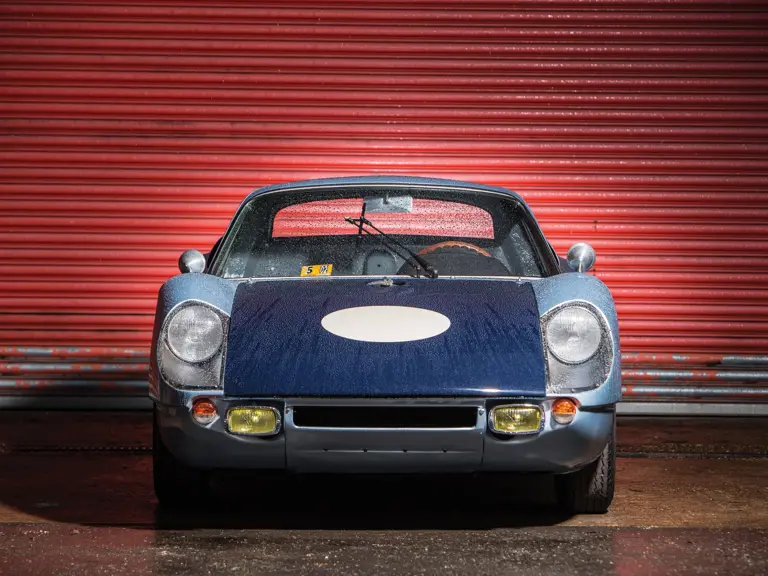

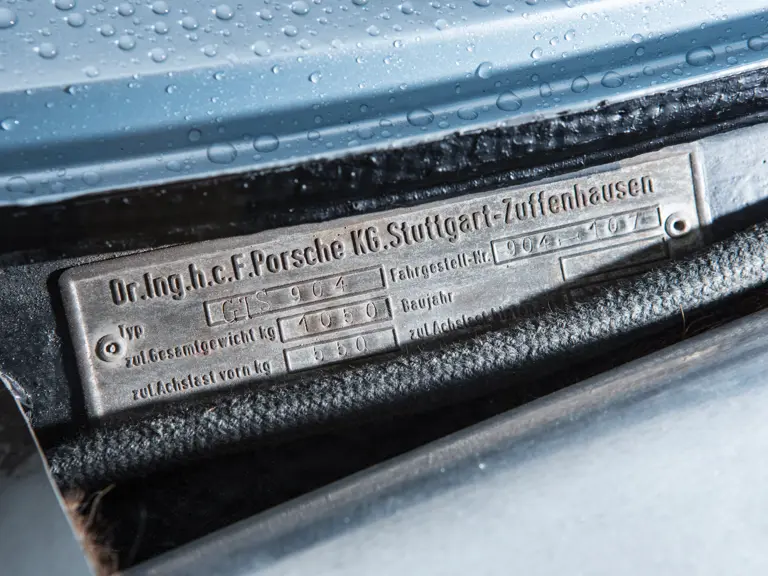
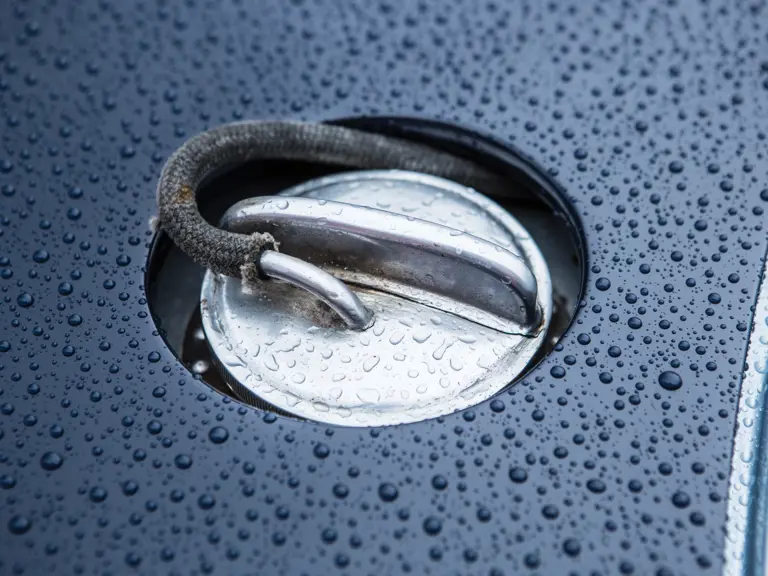
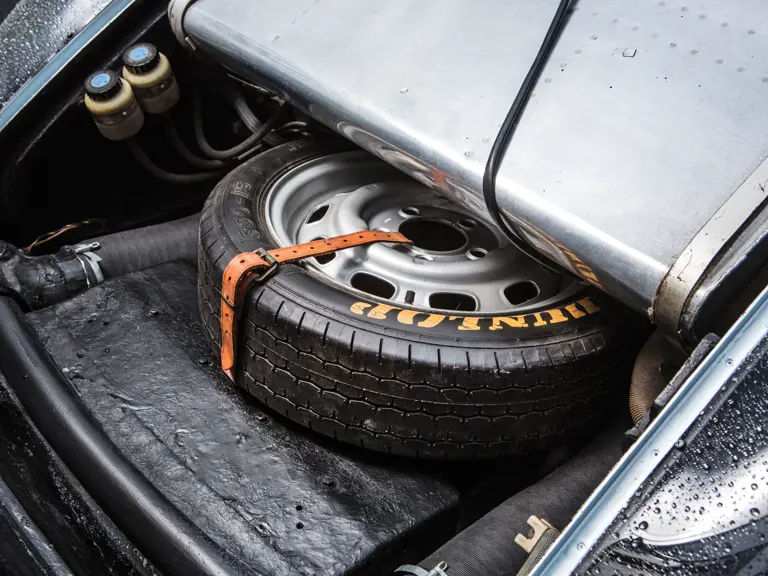
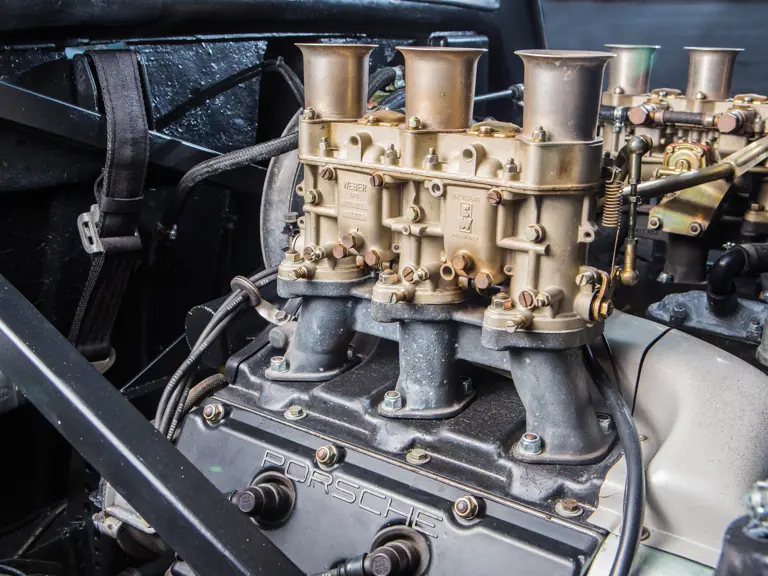
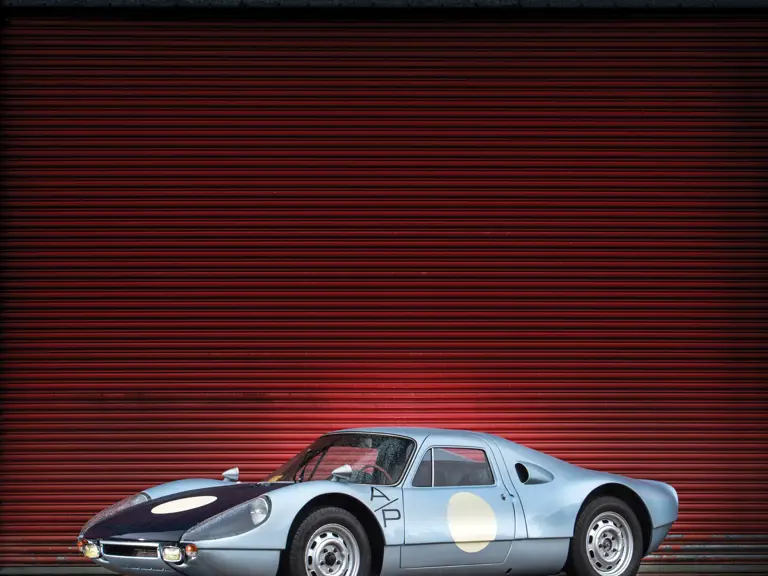
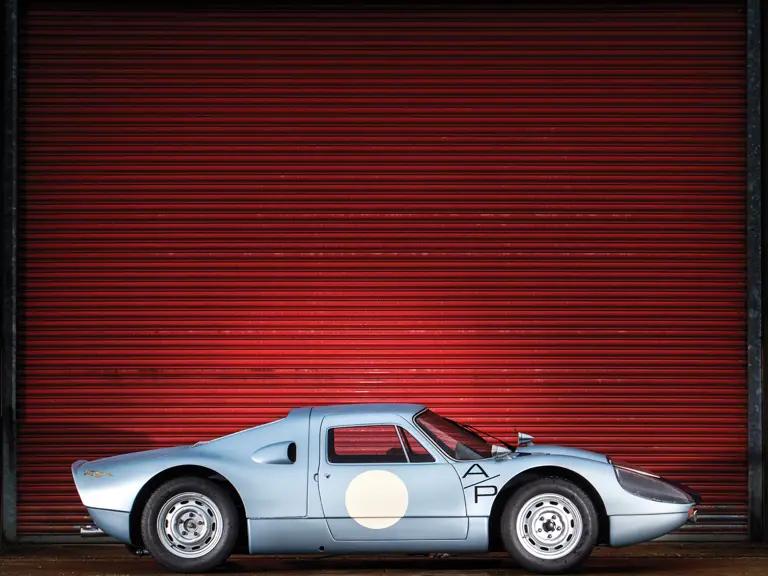

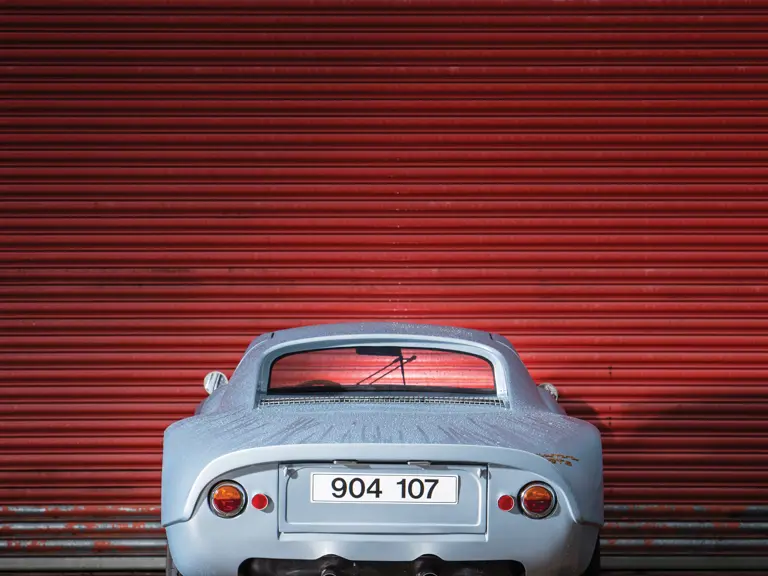

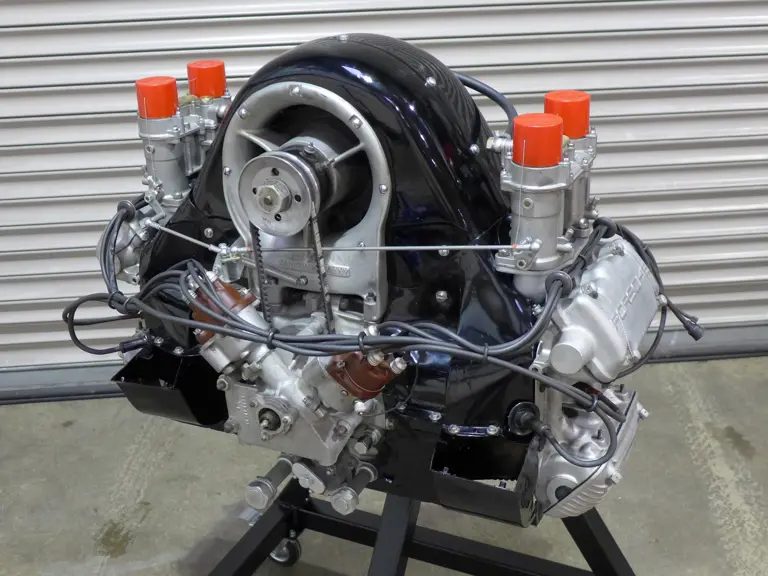
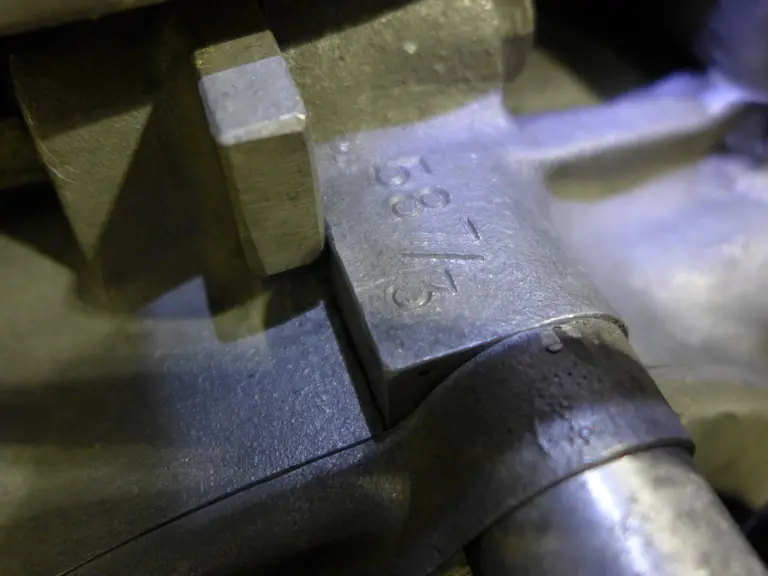
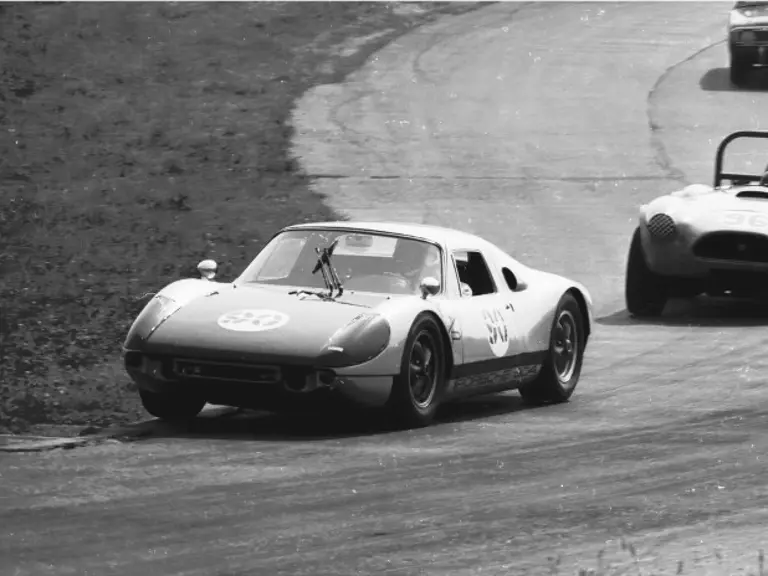
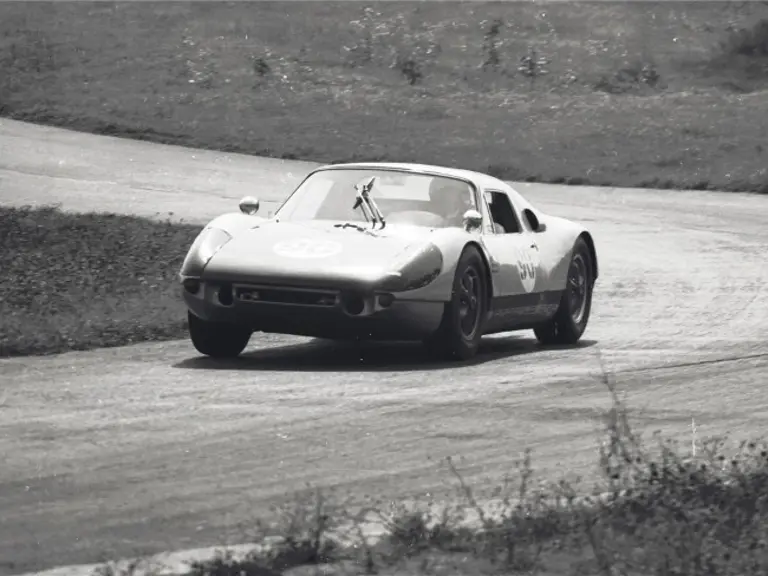
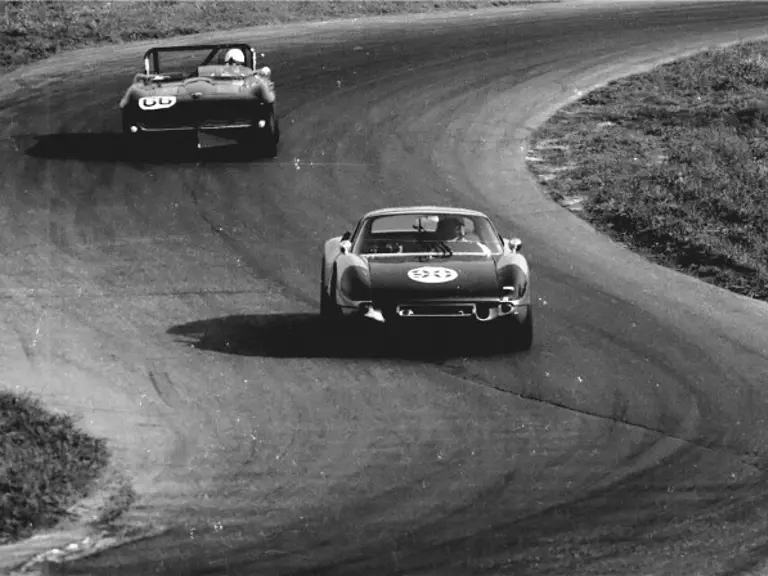
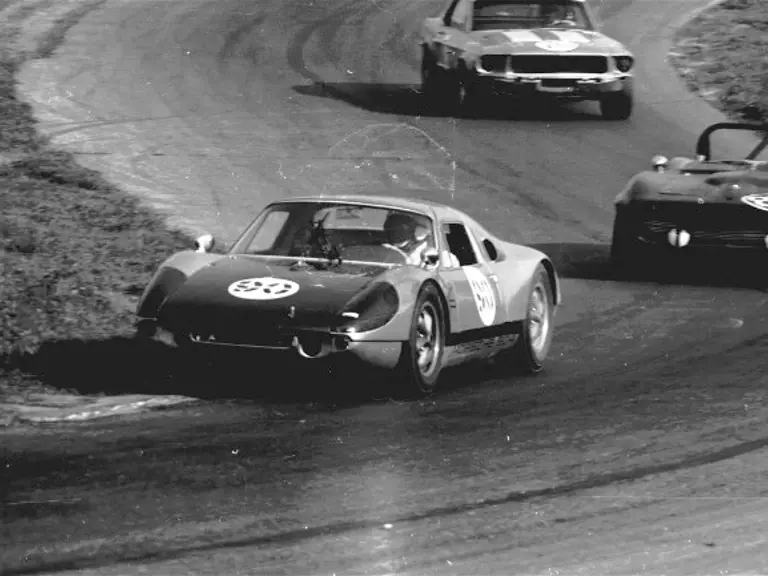
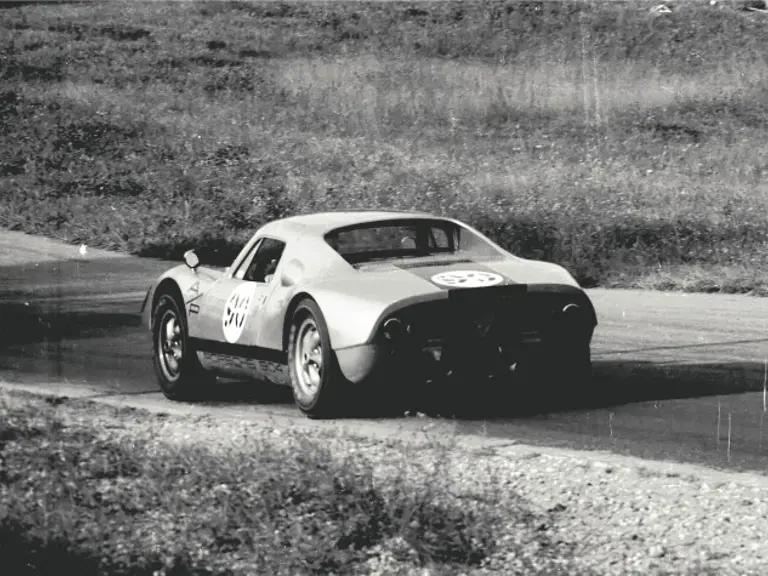
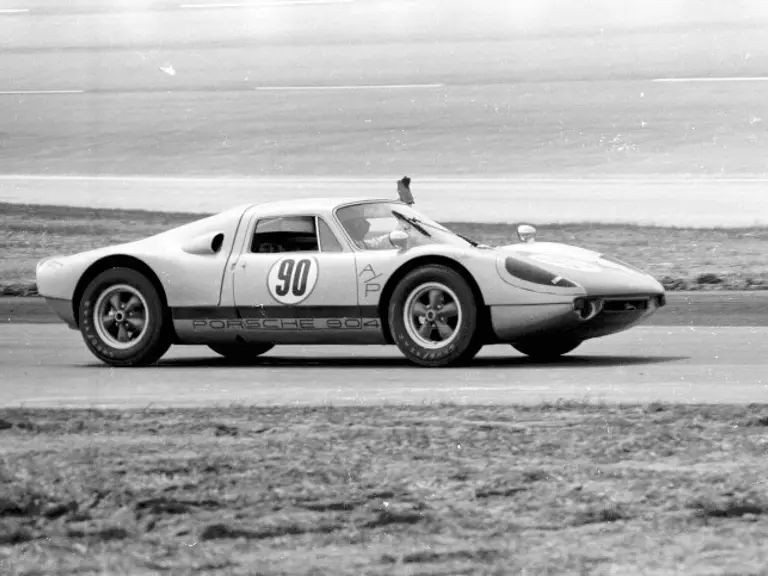


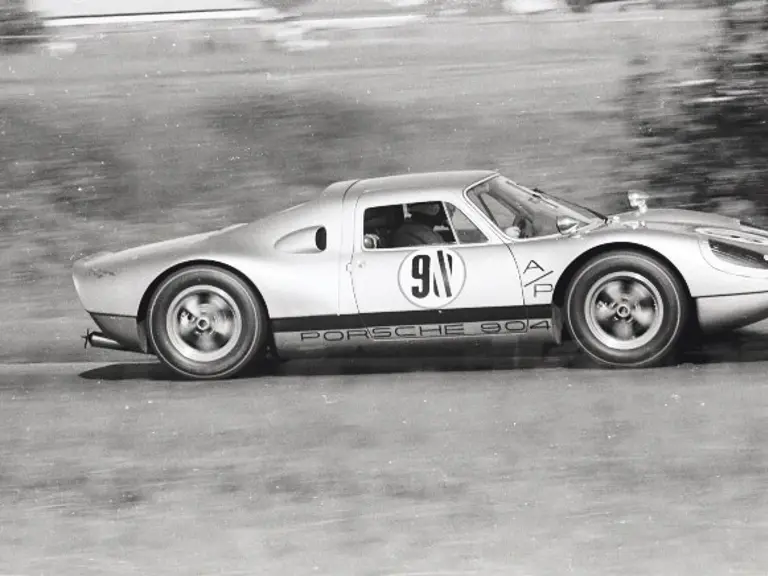
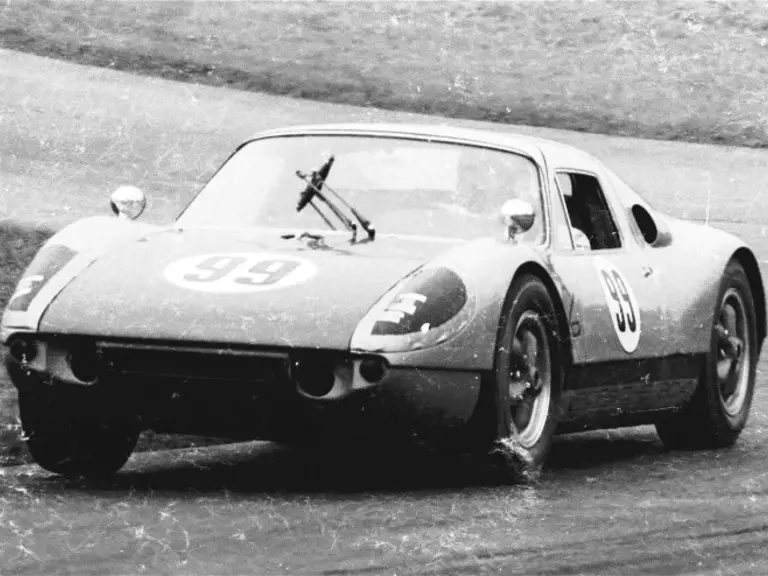

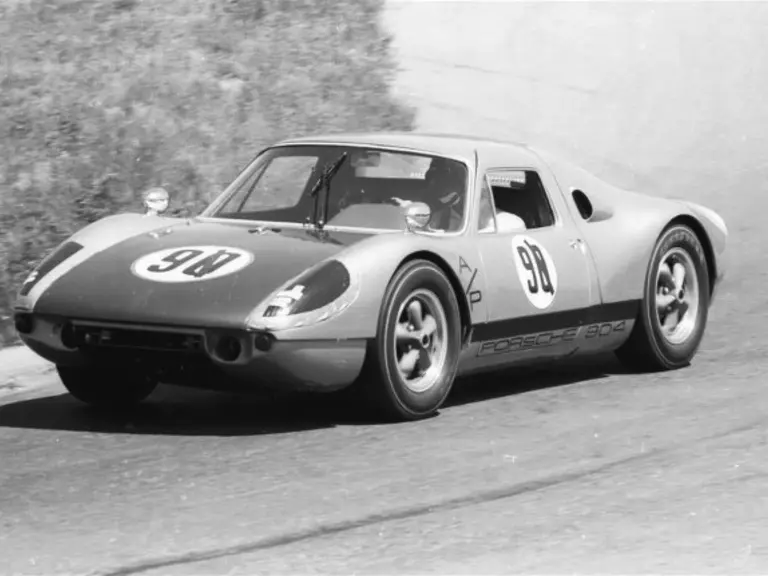
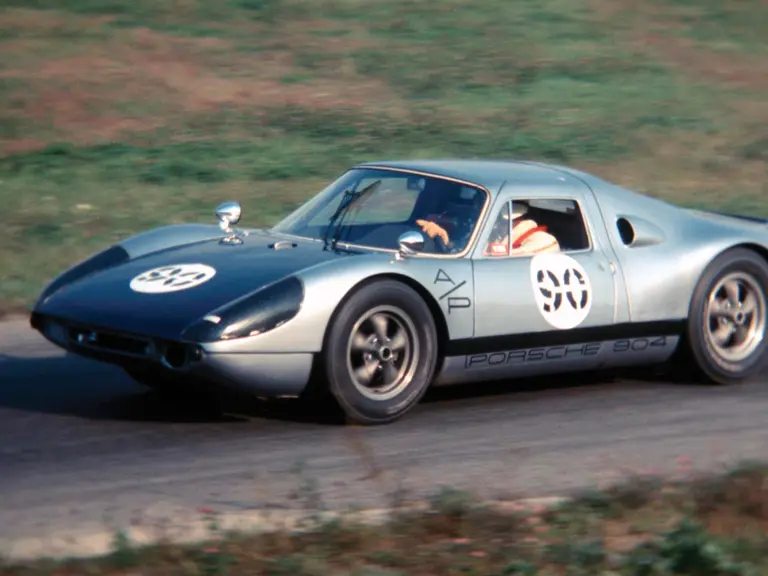
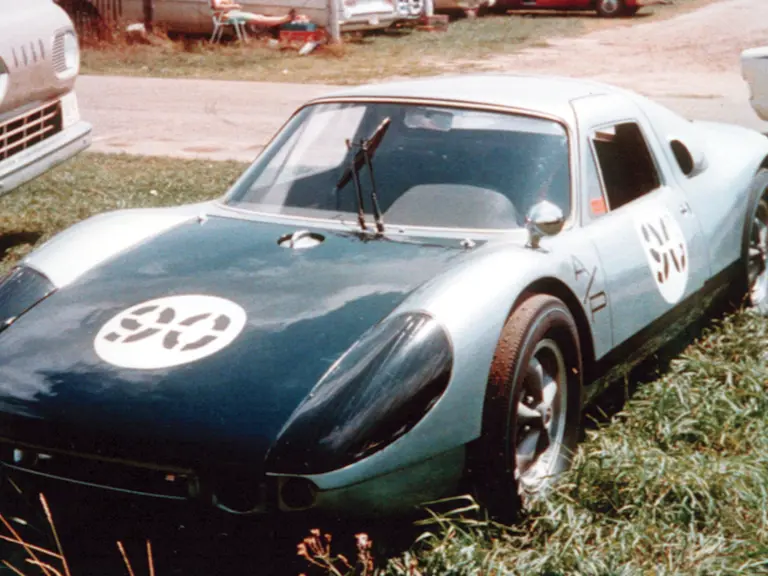
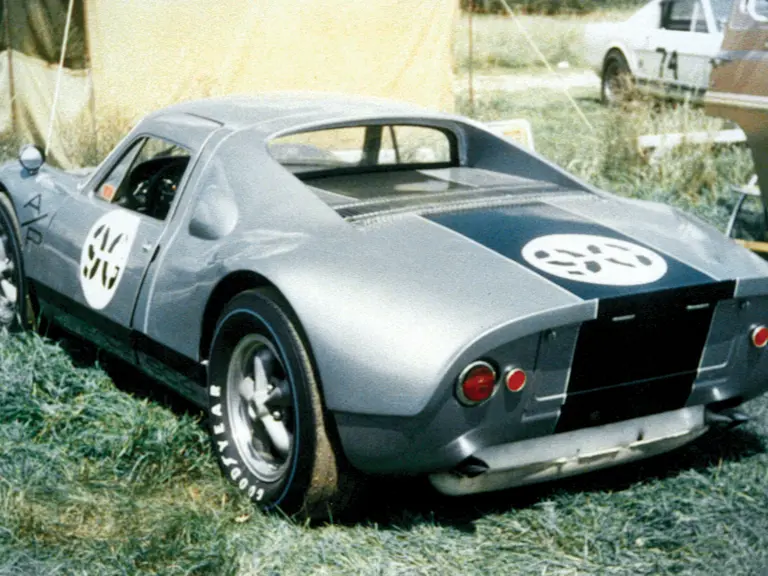
 | Phoenix, Arizona
| Phoenix, Arizona
